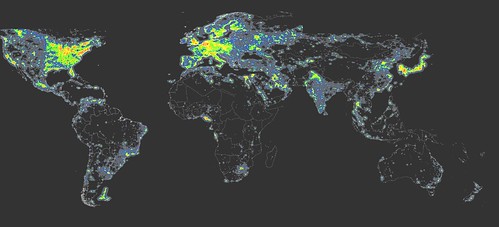Big Bang Monday: Seen From Mangaia

In Upstate New York on Saturday (Columbia County), the clouds went away to show a beautiful view of the stars. Light pollution was at a minimum and one of my friends, who spent some time skiing in New Zealand, commented on how the view from the Southern Hemisphere is completely different.
How appropriate that the Astronomy Picture of the Day (APOD) on 24 September 2011 was from Mangaia, one of the Cook Islands…
Explanation: From Sagittarius to Carina, the Milky Way Galaxy shines in this dark night sky above planet Earth’s lush island paradise of Mangaia. Familiar to denizens of the southern hemisphere, the gorgeous skyscape includes the bulging galactic center at the upper left and bright stars Alpha and Beta Centauri just right of center. About 10 kilometers wide, volcanic Mangaia the southernmost of the Cook Islands. Geologists estimate that at 18 million years old it is the oldest island in the Pacific Ocean. Of course, the Milky Way is somewhat older, with the galaxy’s oldest stars estimated to be over 13 billion years old. (Editor’s note: This image holds the distinction of being selected as winner in the Royal Observatory, Greenwich, Astronomy Photographer of the Year competition in the Earth and Space category.)
I simply must visit New Zealand some day, but I’ll settle for watching USA vs. Italy today in the Rugby World Cup — in New Zealand.

Great picture! When I’m stargazing I have to say that it is the Milky Way that holds my attention the most. Yes, the thousands of galaxies in the historic Hubble Deep Field photos are truly amazing but looking at our “home” galaxy is just as cool. And ya don’t need no fancy telescope for it either, just a place where there is little light pollution. One of these dang to take a trip to some place on this planet where there is ZERO light pollution. Being that I live in the northeast United States (see global light pollution map ), It looks like I’ll have to travel far to see the sky the way our ancestors did. Imagine how the Milky Way looks from those places. I’m talkin 3D in HD baby!
